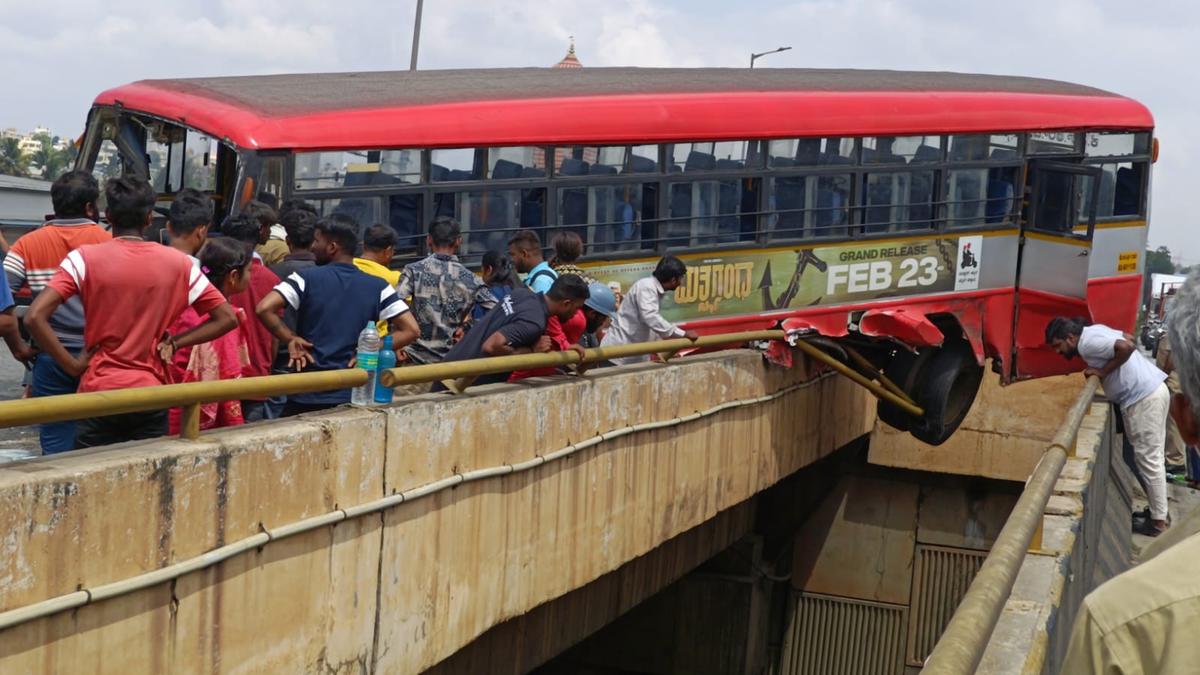The Pulicat Lake, the second largest brackish water lagoon in India after Chilika, sprawling across Andhra Pradesh and Tamil Nadu, is in the spotlight again. Not for its historical, ecological, or economical significance, but for an imminent threat from industrial expansion as the Tamil Nadu government has begun the process of denotifying parts of the Pulicat bird sanctuary.
Encompassing 720 square kilometres, most of the lake falls in Andhra Pradesh and less than 20% in Tiruvallur district of Tamil Nadu. About 60 kilometres north of Chennai, the lagoon is separated from the Bay of Bengal by the Sriharikota island. It is a unique ecotone that supports rich biodiversity — from aquatic life such as mudskippers, seagrass beds, and oyster reefs to more than 200 avian species, including migratory birds such as Eurasian curlews, oystercatchers, bar-tailed godwits, sand plovers, and greater flamingos.
In 1980, the bird sanctuary was notified under Section 18 of the Wild Life (Protection) Act, 1972, (declaring an “intention” to make any area, other than an area comprising reserve forests or the territorial waters, into a sanctuary), encompassing 13 revenue villages surrounding the lake. However, a final notification specifying the limits of the area within the sanctuary must be declared under Section 26A.
In early March 2024, the process of settling claims of the locals was initiated by Tiruvallur Collector T. Prabhushankar for the 13 villages — Pulicat, Kanvanthurai, Pakkam, Avurivakkam, Sirulapakkam, Annamalaicheri, Kallur-Sirumurkuppam, Keerapakkam, Mangodu, Poongulam, Opasathiram, Sunnambukulam, and Medipalayam.
According to Chief Wildlife Warden Srinivas Reddy, the 10-kilometre default eco-sensitive zone (ESZ) will be inapplicable once the sanctuary is notified. Environmentalists fear that the move will facilitate industrial expansion, exacerbating the harm to the delicate wetland ecosystem on which the livelihood of thousands of fisherfolk depends.
Incidentally, months before the claim settlement started, a proposal for the use of 215.8 hectares of land for the development of an industrial park five kilometres from the sanctuary, inside its default ESZ, was made before the National Board for Wildlife (NBWL). Expansion of two steel plants and construction of a new factory for production of chemical compounds for detergents — all within 10 kilometres from the sanctuary — have also been proposed.
These units have been classified as the ‘red’ industries by the Tamil Nadu Pollution Control Board. It is also pertinent to note that the draft comprehensive environment impact assessment submitted for the Adani Kattupalli Port — for which the public hearing was stalled in August 2023 following public outcry — shows that the lake is located 7.2 kilometres from the project site and the present bird sanctuary boundary is a mere 3.17 kilometres away.
Why is ESZ important?
The Ministry of Environment, Forest, and Climate Change has mandated wildlife clearance from the NBWL to establish any industry or execute development projects inside or within a 10-km radius of any protected area. The aim is to protect the environment and avoid its degradation due to anthropogenic activities and to create a kind of barrier or shock absorber for the specialised ecosystem.
The ESZ rules do not mandate displacement and evacuation of locals living in the villages, but they regulate activities such as commercial mining, stone quarrying and crushing, hydroelectric generation, handling of hazardous substances, discharge of untreated effluents, and setting up of brick kilns and polluting industries.
As many as 34 social and environmental collectives and 207 individuals from across the country have written to the State authorities, including Chief Minister M.K. Stalin, urging them not to denotify parts of the sanctuary.
In the letter, they pointed to the presence of more mangroves in the 13 notified villages than those in the lake area and said the lagoon-wetland complex acts as a massive floodwater catchment site when cyclones hit the Tamil Nadu coast.
“Twelve villages in Andhra Pradesh that fall within the sanctuary limits have been given full rights to fishing, grazing, and various other livelihood necessities, without denotification of parts of the sanctuary. In the same way, we request you to settle the rights of the people in the 13 revenue villages in Tiruvallur district, Tamil Nadu, without reducing the sanctuary boundary as per sub-sec 2(c) of Section 23 of the Wild Life (Protection) Act, 1972,” the environmentalists said.
The effluents from industries around the Ennore-Pulicat wetland in Tiruvallur district have already blighted the precious aquatic life of the lake. A major concern is the proliferation of the invasive charru mussels, about which the local fishing communities have been raising the alarm since 2019. It has affected the growth of white prawns, tiger prawns, black prawns, sand prawns, green crab, mullets, and more.
Amid these problems, word of reduction in the ESZ has come as a rude shock to the locals. However, officials maintain that the notification of the boundary will help to conserve the lake.
‘Not linked’
Speaking to The Hindu, Mr. Prabhushankar said that across the State, many wetlands and wildlife sanctuaries had not been notified yet. “So, this is basically re-publication of the original pre-notification that came out in 1980,” he said, adding that Pulicat is the only one among 12 lakes going through the notification process.
The Collector said that if the 13 villages were to be included in the sanctuary, the government would have to acquire all the land, meaning locals could not own any stretch of land. “This will not be possible. There is a confusion that there is some ploy to reduce the sanctuary boundary. But the actual scenario is that if we declare the villages, which include a lot of habitations and commercial areas, it will absolutely be an injustice to the local people. Our endeavour is to define the boundary of the Pulicat Lake in a realistic manner, keeping in mind the livelihood and welfare of fisherfolk and locals,” he said.
A. Raghu, a resident of Annamalaicheri, said residents of the village submitted in writing that they had only one request — there must be no impediment to their livelihood and authorities must allow them to access fishing grounds in the lake. Raj, a resident of Avurivakkam (Keelkuppam), where agriculture is also an important source of livelihood, echoed Raghu’s demand: it is important that their land belong to themselves.
While the claim settlement exercise will define the rights and entitlements of the locals, can it be seen in isolation when there are concerns that industrial development in the area would damage the ecology and the livelihood of the locals? What will be the allowed or proposed use of poromboke and private patta land in the area that is slated for massive commercialisation and industrialisation?
A complex ecosystem
Meerasa Silar is a resident of Jameelabad near Pulicat and recipient of the National Wetlands Champion from the Ministry of Environment, Forest and Climate Change for his work in conserving the Pulicat Lake. He said the lake and its surroundings support not just 10,000 traditional fisher families but also small-time fisherfolk who are not part of the paadu system (a customary routine whereby eligible fishing groups take turns to do specified activities on an allotted fishing ground), women who engage in hand fishing, shell-pickers, Irulars who catch mud crabs, and agricultural labourers of Avurivakkam, Kanavanthurai, Pakkam, and other villages.
Any major commercial construction, however profitable it might be, will damage a complex ecosystem surrounding the lake and may contaminate the groundwater, he warned.
Mr. Meerasa further said the surrounding villages are waterways that drain into the lake. “Not just Pulicat but also Ponneri and north Chennai will be saved by the ESZ land during floods. If industrial construction comes up in these places, the water will cause flooding elsewhere, as it is happening in places like Velachery in Chennai.”
Muddy waters
At the NBWL standing committee meeting, expert member and ecologist Sukumar Raman proposed a site visit before deciding on the approval for the expansion of the steel plants and the construction of the industrial park. While he underscored that the lake is a critical wetland, he concluded that the critical part is only the mouth of the lake and that the projects can be given approval after rationalisation of the sanctuary’s boundary and declaration of an appropriate ESZ. “The project proponent is aiming at net-zero carbon emission and all the water will be recycled and there will not be any discharge from the project area,” Mr. Raman was quoted as saying in the minutes of the meeting.
However, a conservation plan for a wetland needs to consider the entire watershed of the area, especially if it is a wetland system, according to naturalist Yuvan Aves, who has been visiting Pulicat for a decade and has written widely on the wetland. “The sanctuary and the ESZ need to address upstream, downstream and catchment issues. Now, the lower stream of the Kosasthalaiyar, its floodplains all need protection; otherwise, pollution and invasive species will destroy Pulicat,” he said.
“The current ESZ is itself problematic and reducing it again is not good. Ideally speaking, water sites need a much larger ESZ and I hope that becomes a policy in India,” he said.
A Forest Department official said an expert agency would be roped in for advice on the demarcation of the ESZ and the extent of the ESZ is not concrete as of now. “Without proper demarcation, it will be difficult to conserve the lake,” the official said.
Nityanand Jayaraman, an environmental activist, says the current re-notification under the Wild Life (Protection) Act, 1972, has nothing to do with the demarcation of the ESZ, which is to be done under the Environment (Protection) Act, 1986. “However, the renewed call for claiming of rights within the notified boundary has to be seen in light of the State’s interests in fostering port- and expressway-led industrial and logistics development in Ponneri. Real estate speculation has been rampant in the eastern belt of Ponneri and Gummidipoondi. These developments will be the final nail in the coffin of the Pulicat and Ennore wetlands, with disastrous consequences for Chennai’s water and flood security,” he said.

 1 week ago
152
1 week ago
152


